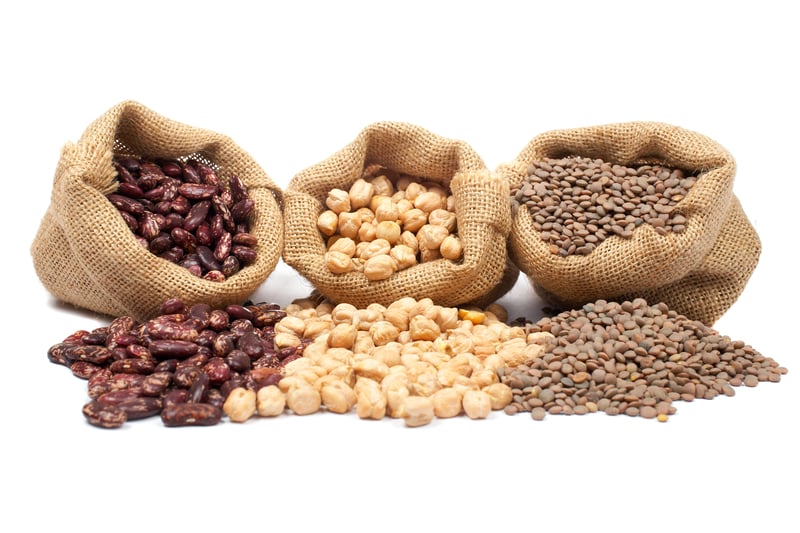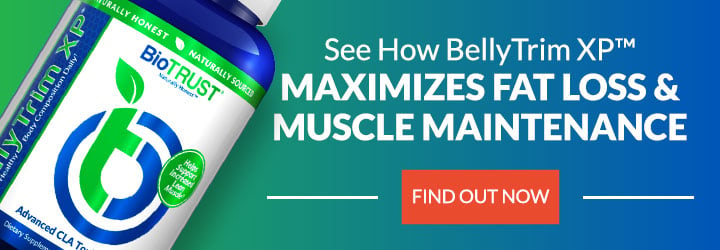The 7 Healthiest Beans and Legumes to Eat

When it comes to superfoods, beans and legumes probably aren’t the first foods that come to mind. These humble foods are, well, pretty basic. They lack the hipness of avocados, the vibrancy of blueberries, the eye-catching headlines of kale, or the juiciness of a grass-fed beef. While they may not be the most exciting food on the menu, they may be one of the most important staples. There are many choices when it comes to the healthiest beans to eat, and they fit well into just about any cuisine.
Additionally, they can dramatically decrease the cost of groceries while providing plenty of fiber, protein, and phytonutrients. They may not offer the same protein as typical animal products, but they still provide a solid amount.
Whether they’re the foundation for your next batch of chili, the dip that goes with your chips or veggies, or an inexpensive tool to extend the next meal to serve a few more people (for example, added to burgers, meatballs, or spaghetti sauce), beans deserve a lot more credit than they tend to get. That’s especially true of our picks for the top seven healthiest beans.
Top 7 Healthiest Beans to Eat
1. Chickpeas (aka Garbanzo Beans)
- Calories: 269
- Protein: 14.5 grams
- Fiber: 12.5 grams per cup
This versatile bean can be used to create creamy hummus, or roasted, provide a bit of crunch on top of a salad. They can also be mixed in with ground beef to extend a recipe, and so much more.
They provide a good dose of protein, muscle-building amino acids, and soluble fiber. Researchers indicate that soluble fiber is the type that absorbs water to form a gel in the gut. This fiber then helps block cholesterol, making chickpeas a heart-healthy, digestion-smoothing, immunity-boosting food. 1,2
Research even suggests that any beans, including chickpeas, may help people lose weight, improve glucose and insulin regulation, and reduce the risk of some cancers, especially when they are used to replace a typical meat-filled meal and combined with other healthy lifestyle choices. 3
Chickpeas are surprisingly nutrient-dense, providing fiber, protein, and polyphenols. They also encourage healthier eating overall—people who regularly eat them tend to have increased intake of polyunsaturated fatty acids, vitamin A, vitamin E, vitamin C, folate, magnesium, potassium, and iron. 4
Because they can absorb the flavors of just about any seasoning, they’re highly versatile. When not sure what bean to use, simply drain and rinse a can of chickpeas, and toss them into your soup, stew, salad, ground meat, or whatever you have planned.
2. Kidney Beans
- Calories: 215
- Protein: 13 grams
- Fiber: 14 grams per cup
Get a good dose of protein and fiber along with thiamin and riboflavin in a humble cup of kidney beans. Add some rice and spices for a Southern favorite, as a part of your next batch of chili, or include them in your next tossed salad.
Kidney beans have also been found to reduce blood sugar levels, preventing spikes to help people maintain weight and protect against metabolic syndrome. 5,6
3. Black Beans
- Calories: 227
- Protein: 15 grams
- Fiber: 15 grams per cup
Another bean high in protein, fiber, and iron, black beans are perfect for a burrito bowl, added to a spicy salsa, or even as the main dish served up with some onion, a splash of lime, and your favorite Mexican-flare spices.
A staple in Central and South America, black beans again have beneficial effects on blood sugar (preventing post-meal spikes), which helps reduce the risk of diabetes and supports weight loss. 5
4. Pinto Beans
- Calories: 245
- Protein: 15 grams
- Fiber: 15 grams per cup
Typically eaten as whole, mashed, or refried in many popular Mexican dishes, pinto beans are another healthy addition to the diet. Studies have found that they may help reduce both total and bad LDL cholesterol levels as well as support gut health and promote heart health. 7,8 Like the other legumes on this list, they have also been shown to help regulate blood sugar levels. 5
5. Edamame (aka soy beans)
- Calories: 298
- Protein: 29 grams
- Fiber: 10 grams per cup
While soy products (i.e., soy milk, soy cheese, or soy protein) may not be on the top of the list, non-processed soy like edamame and tofu are rich sources of complete protein, fiber, iron, and a unique type of antioxidant known as isoflavones. 9
6. Green Peas
- Calories: 125
- Protein: 8 grams
- Fiber: 9 grams per cup
Whether you serve them as legumes or as your veggie side, you’re upping the nutritional content of your meal. They provide 8 grams of protein per cup and are bursting with sweet flavor as long as they’re cooked correctly (i.e., bright green, not overcooked until brown and mushy).
Peas, like so many other of the healthiest beans and legumes on this list, have been shown to support healthy cholesterol and blood sugar levels to help decrease insulin resistance and belly fat. They also increase satiety. 10
7. Lentils
- Calories: 230
- Protein: 18 grams
- Fiber: 17 grams per cup
Another legume that’s a quality source of plant proteins, lentils provide numerous benefits due to their bioactive peptides (such as lectins), resistance starches and dietary fiber, and vitamins and minerals. Some of the benefits include lowering blood pressure, decreasing cholesterol levels, and improving glycemic load. 11
Other research has found that lentils can help people eat less and thus decrease blood sugar and support weight loss. One small study, for example, found that those given pasta with a lentil-containing tomato sauce ate less in the same meal than those who didn’t eat the lentils. This appears to be due to increased satiation; that is, they felt fuller for longer. 12
Other studies have found that people who eat more lentils and other legumes have the lowest rates of diabetes, likely due to the beneficial effects of legumes on gut health. 13
Healthiest Beans to Eat: A Wrap-Up
There are many other great choices when it comes to beans and legumes, including navy beans, green beans, fava beans, adzuki beans, Anasazi beans, black-eyed peas, and even peanuts (though they’re much higher in calories, so the serving size is smaller).
No matter which beans or legumes you enjoy, because they’re so high in nutrients like folate, potassium, iron, and magnesium, you’ll enjoy big health benefits, such as:
- Blood sugar stabilization
- Improved gut health
- Weight-loss support
- Improved heart health
- Decreased food costs
If you’re increasing the amount of beans you eat, do so slowly. The increase of fiber can cause some digestive discomfort and increased gas when too abrupt. In addition, make sure you’re drinking plenty of water to help that fiber slide through the system easily.





 7 Signs Your Body is Seriously Low on Collagen (not just wrinkles)
7 Signs Your Body is Seriously Low on Collagen (not just wrinkles) Health Expert: "Turmeric Doesn't Work (unless...)"
Health Expert: "Turmeric Doesn't Work (unless...)" 3 Warning Signs Your Probiotic Supplement is a Total Waste
3 Warning Signs Your Probiotic Supplement is a Total Waste

